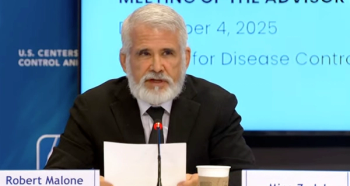
- Medical Economics March 2024
- Volume 101
- Issue 3
Feds ease restrictions on treating opioid addiction via telehealth
Doctors soon will find it easier to use telehealth to prescribe medications for helping patients with opioid addiction
The expanded use of
“This final rule represents a historic modernization of OTP regulations to help connect more Americans with effective treatment for opioid use disorders,” Miriam E. Delphin-Rittmon, Ph.D., HHS assistant secretary for mental health and substance use and head of SAMHSA, said in a news release. She added that the rule change will be especially helpful to people living in rural areas or with low income, many of whom face difficulties getting to a doctor’s office.
Provisions of the rule designed to increase access to medications for treating opioid use disorder include the following:
Making permanent the flexibilities introduced during the COVID-19 pandemic that expand eligibility for patients to receive take-home doses of methadone. Research has shown that patients receiving take-home doses are more likely to remain in treatment and less likely to use illicit opioids.
Allowing use of telehealth to start treatment for
Allowing nurse practitioners and physician assistants to order medications in OTPs, where state law allows, to reduce the burden on OTP operations and increase patient access to medications.
Removing the requirement that patients have a history of addiction for a full year before being eligible for treatment.
Expanding access to interim treatment, allowing patients to initiate medication treatment while awaiting further services to ensure people have access to care as soon as they are ready.
The American Medical Association praised the increased access to methadone treatment for patients starting or continuing in an OTP. “Cementing these policies is a step in the right direction in the fight against the worsening overdose epidemic to increase equitable access to care, reduce stigma of seeking treatment for OUD and embrace technology in medicine,” Bobby Mukkamala, M.D., chair of the association’s Substance Use and Pain Care Task Force, said in a statement. “Modernizing rules and regulations for prescribing these medications continues to be of paramount importance.”
The final rule becomes effective on April 2 with a compliance date of Oct. 2, 2024.
Jeffrey Bendix is senior editor of Medical Economics.
Articles in this issue
over 1 year ago
6 steps to starting an RPM programover 1 year ago
What does the increase in RPM mean for primary care?over 1 year ago
Tackling medical AI bias will improve health equity for allover 1 year ago
The first line of defense against cybercriminalsover 1 year ago
What happens when doctors don’t talk to each otherover 1 year ago
Interoperability plays a crucial role in medical billingover 1 year ago
Generative AIover 1 year ago
The new weight loss drugsNewsletter
Stay informed and empowered with Medical Economics enewsletter, delivering expert insights, financial strategies, practice management tips and technology trends — tailored for today’s physicians.















